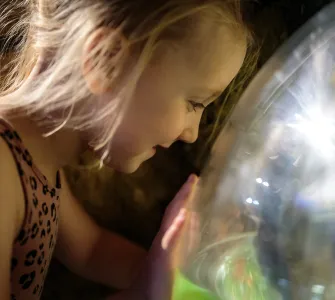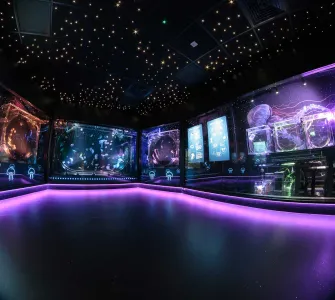Following on from completing her training period early last year, Deep Aquarist Shoshana, returned to the New England Aquarium Turtle Rehabilitation Centre in Boston, Massachusetts, USA. 415 turtles were admitted into the hospital this winter, so she has been putting into practise valuable skills that aim to save the lives of hundreds of these endangered and iconic creatures.
Thrown into the thick of it, Shoshana has been working hard with the team, assisting in the rehabilitation of stranded turtles, administering immediate and vital care to get them back onto the road of recovery.
As winter approaches, sea turtles should make their way south to warmer tropical waters as the waters around Cape Cod Bay becomes too cold. However, each year many turtles do not make the journey in time. Trapped by the hook shape of the bay, the turtles can become disoriented. When the water reaches about 10°C by mid-November, the turtles are too cold to eat, drink or swim and become “cold-stunned”, stranding themselves on the beach. Often they are suffering from life-threatening hypothermia, emaciation, dehydration or injuries.
Shoshana says “We had around hundreds of turtles admitted to the centre, the majority being Kemp ridley’s which is the most endangered species in our world’s oceans. They come in suffering from cold shock and injuries – and they were still coming in as I finished my volunteer period. It continued to be one of their busiest seasons so far, which included a 300lb Loggerhead, the largest they have ever needed to rescue”.
“As soon as the turtles arrived at the centre, it was all hands on deck to get them into a stable condition as quickly as possible. The body temperature is taken and heart rate checked, because of their solid shell, this has to be taken through the shoulder. Raising the turtle’s body temperature is a delicate process, increasing it too quickly can cause more damage. So when they come in, they all go into pools at 12.5°C, this is then increased by 5 degrees each day until they are well enough to go into the largest pool, which is maintained at 22°C.
“The coldest I encountered was a Kemp ridley’s turtle whose internal temperature was 7.4°C. It was so cold in my hands, I couldn’t believe it was still alive! For cases, where the turtle is very weak and not breathing well, they are offered more assistance. They can be placed on a neoprene ‘surfboard’ to help keep them afloat in the water until they are strong enough to break the surface and take good breaths on their own”.
There are a number of centres on standby to assist in caring for the huge volume of turtles, so occasionally some are moved to other parts of the USA. Co-ordinated by the National Oceanic and Atmospheric Administration (NOAA), pilots transport the stronger, more stable turtles further south to alternative facilities to finish their rehabilitation period. Each turtle is continually and critically assessed until they are deemed strong enough to return to the ocean and complete their migration down to warmer waters.
Connie Merigo, Rescue Department Manager at the New England Aquarium said “Shoshana proved herself quite the capable work force, with her seasoned instincts and judgement, it was easy to see that she has years of experience in Aquaria behind her. She had retained all of what she had learnt through her training period earlier in the year and was ready to get to work when she arrived on her first day. Quick to pick up skills in a number of procedures, she was able to rotate through a number of group specialities including the critical swim group, food group and transport group. The centre certainly benefited from her experience of working with marine turtles, she was a very productive member of the team during an incredibly busy season.
“We are currently entering the last phase of our admissions. With a total of 415 being admitted into our hospital, it has put the 2018/2019 season in second place for the highest number of turtles being treated.”
The Deep is proud to be continuing to support and assist our colleagues ‘over the pond’ in the rescue and rehabilitation of sea turtles. This vital work is proving crucial to safeguarding the future of one of the world’s most iconic ocean dwelling creatures.
~ END ~
For more information please contact Becky Leach, Marketing Manager at The Deep on 01482 381091 or email becky.leach@thedeep.co.uk
Notes to Editor:
Across the globe, there are seven different species of Sea turtle living in our world’s oceans, all of which are registered on the International Union for the Conservation of Nature (IUCN) Red List. Six of these – Green, Leatherback, Kemp Ridley’s, Loggerhead and the Olive Ridley – can be found throughout the oceans, in both warm and cold waters. The seventh species, the Flatback turtle, lives only in Australia.




